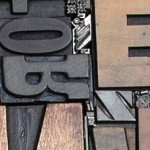The world of advertising is an ever-changing and expanding field. One thing that has remained constant is the need for logos. They’ve been around for millennia, even showing up in the Bible in the form of signet rings. For a concept to last that long, there has to be a universal need that crosses generations, cultures and technologies.
This is the first of ten tutorials about logo design. Artist don’t like to follow rules, but in the world of design there are some rules that are hard to get around. And as these articles will be geared toward those with little to no experience, we’re going to start with some basics. Consider what a logo actually is. It is a distinct image and/or type treatment that represents a person, place, company, movement, etc. And along with representing that identity, it can relay an emotion, it can exude confidence and it can even inspire. That’s the power of design.
Logos are used for many things. They establish an identity, they promote a brand, they protect a reputation. I’ve made a couple logos for people who simply wanted an image to represent themselves. But for the sake of this article, I’m now referring to corporate logos (trademarks) and the need for them to relate an immediate and distinct identity. With that as an introduction, let’s move on to rule number one:
Photos are not logos and should not be used in logos.
The easiest way to explore this is with an example. Let’s say you have a flower shop and you possess a beautiful photo of a custom arrangement. You’re proud of it and want it to represent your business.
Even if the photo in question is of professional quality, it is not logo material. It could be used in the design of your letterhead. The photo could be incorporated into your business card. But adding your company name below the photo and using it as your trademark is poor design. Why is this?
- STYLE: A logo needs to come across as uniquely planned and designed. A photo does a poor job of assigning this uniqueness to a trademark. It may be of impeccable quality, but it will lack the desired stylization.
- SIZE: A good logo works well at any size. Photos do not scale well. When displayed at a small size, they become difficult to make out, especially when printed in black and white. When displayed at a large size, they quickly become pixelated unless the original file is created at a very large size. More on this in a future article.
- COLOR: For budgeting reasons, there are many times your logo will be printed in only one color—and that one color is not always black. A photo printed in a single color quickly loses its contrast and impact.
In closing, let’s go back to the example of the flower shop. What are the alternatives?
A flower shop logo will usually include a flower. You can take a letter of the company name and replace it with a flower illustration shaped like that letter. That solution is overdone, but if done well, it’s a very viable solution. You can integrate a stylized flower above or to the the left of the company name. You can even purchase a typeface that has an organic feel and not use an image.
The options are limitless. But as you look for your solution, leave your camera behind.
You may be asking, “If I can’t use a photo, how am I supposed to create an image?” This is where vectors enter our story. And this is where the second article will pick up.



